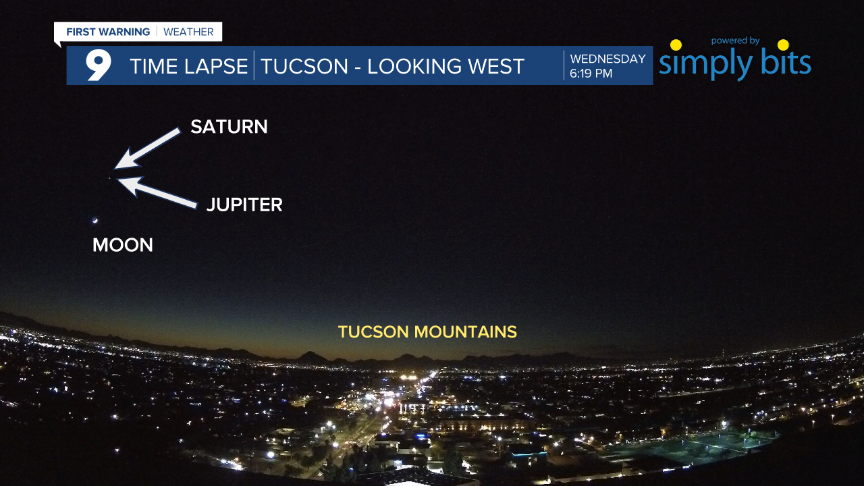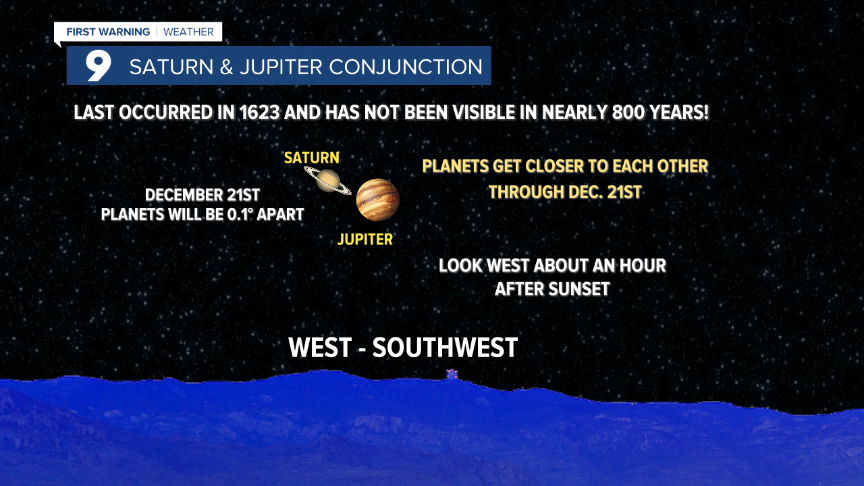TUCSON, Ariz. (KGUN) — We are quickly approaching the official start of winter. The winter solstice occurs early Monday morning and marks the beginning of the winter season. The winter solstice also brings the day with the least amount of daylight. In Tucson, we’ll have 10 hours and 3 minutes of daylight before we start adding daylight as we head into the final week of the year.

All of this is pretty special but pales in comparison to something we haven’t been able to see in nearly 800 years! Not only will winter begin, but a planetary conjunction will take place in our skies. Jupiter and Saturn will come together and culminate in a conjunction on Monday night.
Over the last few weeks, we’ve witnessed the two planets getting closer together in the southwestern sky. At the peak of the conjunction, Monday night, the two planets will have only 0.1° of separation between them. In reality, according to NASA, a distance of about 450 million miles will separate the two bright planets at the time of the conjunction. However, to those of us viewing them from Earth, Jupiter and Saturn will appear so close together that they will look almost like one big planet or star.
What makes the event even more special is that the moon will be nearby in the hour after sunset. By the way, this is one celestial event you won’t have to awake in the middle of the night or the wee hours of the morning to witness. The best time for viewing will be soon after sunset and on through the evening. Here is a view of the conjunction as it appeared about an hour after sunset on the evening of December 16th.

A similar conjunction happened in 1623 but the peak of the conjunction was not visible because it happened during the day. This is what makes this conjunction so special. We can actually see it and that hasn’t happened in nearly 800 years! It’s even more special that it happens right on the solstice.

The last time Saturn and Jupiter were this close together and visible to humans was way back in 1226. Looking to the future, several Saturn/Jupiter conjunctions will happen but not with the close proximity of this one. To find anything close, we have to go all the way out to November 4, 2080 according to skyandtelescope.org. Even that conjunction will still have 1.2° of separation. Want to see another Saturn/Jupiter conjunction that has only 0.1° of separation? Good luck because that won’t happen until after 2400!
So, if you have yet to see Jupiter and Saturn getting closer to each other, be sure to catch a glimpse in the nights leading up to Monday night. We should get some good viewing this weekend with clear skies and cool temperatures. Monday, the night of the conjunction, some high clouds are in the forecast for southern Arizona. Let’s hope the clouds aren’t thick enough to obscure our view of this spectacular event.





